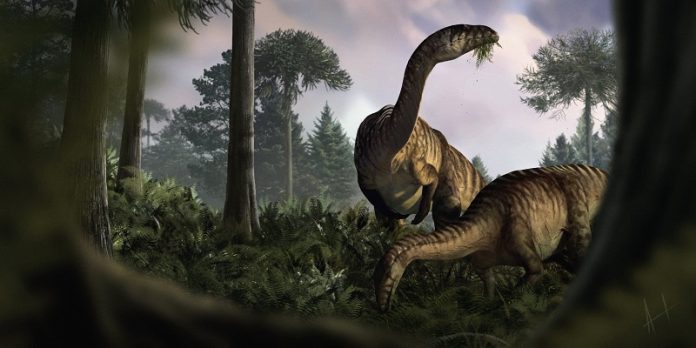
Scientists have uncovered new clues about what made dinosaurs thrive millions of years ago by studying fossilized poop!
Researchers from Uppsala University and several international partners analyzed hundreds of samples of ancient feces, known as coprolites, using advanced imaging techniques.
Their findings reveal details about what dinosaurs ate, how they interacted with their environment, and why they became so successful.
The study, published in the journal Nature, offers a rare glimpse into ecosystems from around 200 million years ago during the Triassic and Jurassic periods.
By examining undigested food remains, such as plants and animal parts, scientists pieced together the “who ate whom” of the past. This detective work helps explain how dinosaurs adapted and thrived in their changing world.
“Studying what animals ate gives us a better understanding of how they fit into their ecosystems,” said Martin Qvarnström, lead author and researcher at Uppsala University.
“This helps us understand the factors behind the dinosaurs’ success.”
The researchers focused on a previously understudied area in the northern part of the supercontinent Pangea.
Over 25 years, they collected samples and combined data from coprolites with other evidence, such as bite marks, footprints, bones, and climate data. This comprehensive approach allowed them to reconstruct ancient ecosystems and identify patterns in early dinosaur evolution.
Surprising discoveries in dinosaur diets
The coprolites revealed a surprising variety of food. Some contained fish bones and insects, while others had traces of larger prey. Small beetles and semi-complete fish were found remarkably well-preserved. Predators that chewed bones, similar to modern-day hyenas, left behind fragments rich in nutrients like marrow.
The diets of the first large plant-eating dinosaurs, like the long-necked sauropods, were particularly interesting. Their coprolites contained tree ferns, other plants, and even charcoal. Researchers think the charcoal might have been eaten to detoxify their stomachs since some ferns can be toxic.
“Our findings showed that early dinosaurs had diverse and adaptable diets, which likely helped them survive environmental changes,” said Grzegorz Niedźwiedzki, senior author of the study. “This adaptability was a key to their success.”
Lessons from the past for today
The study also fills an important gap in our knowledge about the first 30 million years of dinosaur evolution. While much is known about their extinction, less has been understood about how they rose to dominate the Earth. The team developed a five-step model to explain how dinosaurs evolved and adapted to global changes during the Late Triassic period.
Their research highlights how dietary flexibility and the ability to adapt to new environments were critical traits for survival. These lessons from the past are relevant today, as modern species face challenges like climate change.
“Studying ancient ecosystems helps us understand how life adapts to environmental changes,” Qvarnström explained. “Dinosaurs remind us that adaptability is key to survival.”
Niedźwiedzki summed it up: “Early plant-eating dinosaurs had a love for fresh greens, and it’s this love that helped them survive and thrive.”



